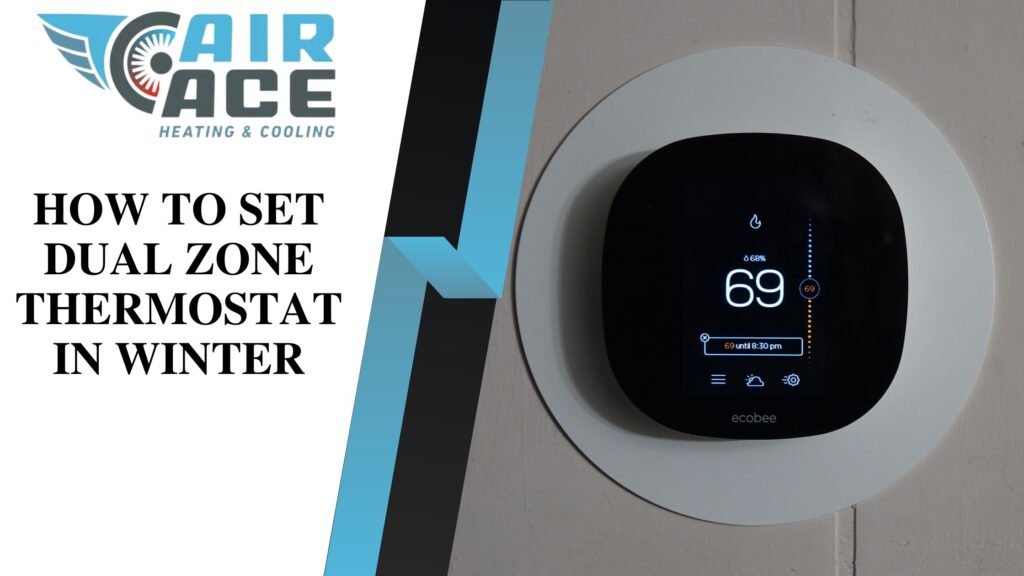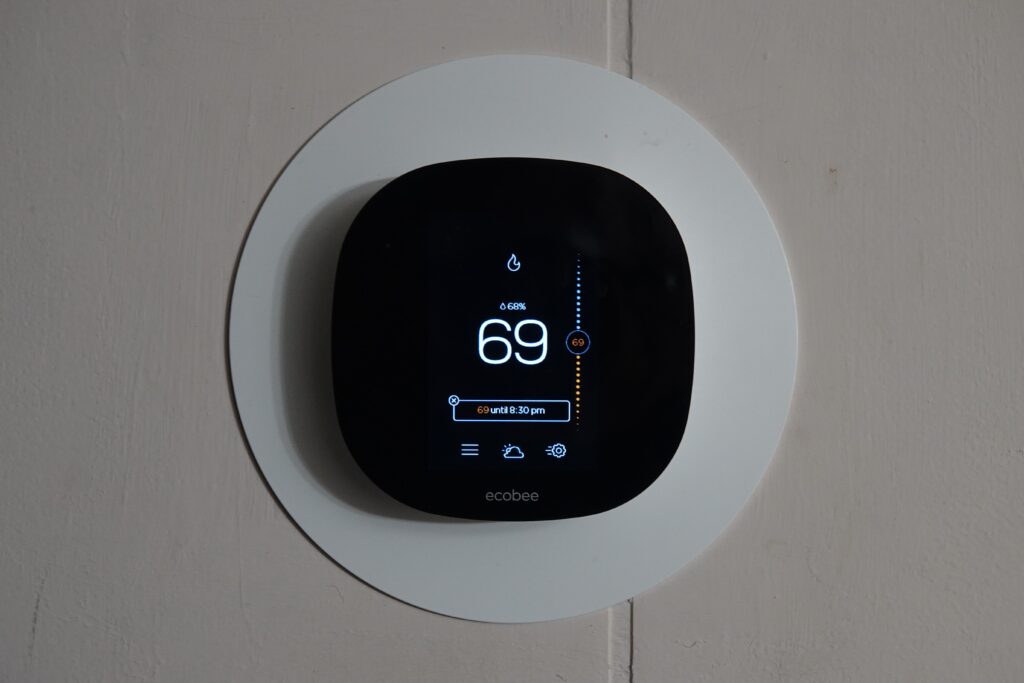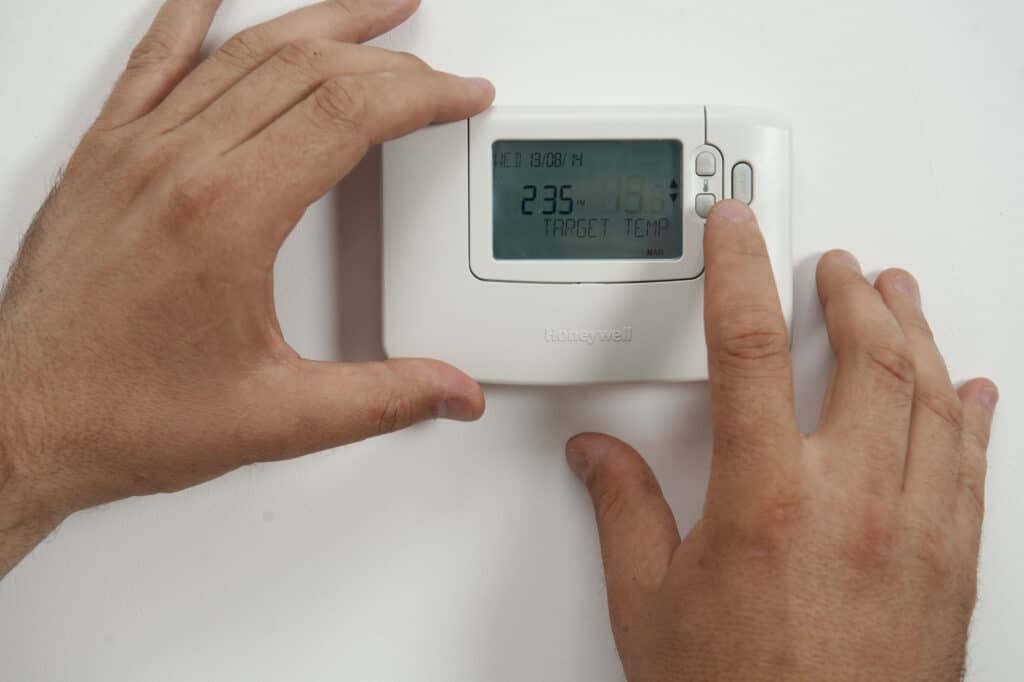How to Set Dual Zone Thermostat in Winter

Setting your thermostat to a dual-zone temperature can save you money on your energy bill and keep your home more comfortable. But if you’ve never done it before, it can seem a bit daunting. Luckily, we’re here to help. In this post, we’ll walk you through everything you need to know about setting up a dual-zone thermostat in winter.
From understanding the basics of how dual-zoned heating works to tips for getting the most out of your system, we’ve got you covered. So whether you’re looking to save some money or just want to be extra cozy this winter, read on for everything you need to know about setting a dual-zone thermostat.

Source Image: Unsplash
Installing a programmable dual zone thermostat in your home can be a great way to save energy, money, and time during the winter season.
Setting up this type of thermostat is simple—all you need to do is program desired settings for each zone accordingly. The dual zone thermostat will then adjust these thermostat settings at different times based on when the area of your home is most in use to ensure that you are always comfortable while also helping you save money.
By setting up your programmable thermostat correctly during the winter season, you can enjoy even temperatures throughout your home while helping reduce your electric bill.
Why You Should Consider Setting Your Thermostat to a Lower Temperature in the Winter?
During the winter season, home energy costs can be significantly reduced by setting multiple thermostats to a lower temperature. Controlling the temperature of multiple rooms in a home allows for effective energy usage, as each space can be tailored to the occupants’ needs. Heating multiple areas at once, while unnecessary and inefficient, often results in wasted energy.
With multiple thermostats set throughout your home, you can more effectively control which spaces are heated and at what temperatures throughout the winter. Doing so will aid in reducing overall energy costs while still allowing multiple areas to remain heated comfortably.
Split Your System into Multiple Zones
HVAC Zoning is widely used in commercial buildings but is also becoming widespread in homes. While commercial systems may contain many air conditioning units, there can be multiple zones in a home that have only one unit.
You can control your thermostat in your house from different thermostat settings. When you have an AC company you can ask them to adjust the thermostat to Zone Control. If you have the thermostat setup in place it should help you choose the ideal thermostat setting to save money and keep happy year-round.
If your house is unzoned, you can still do things to control how much energy your Air Conditioner system uses. One easy way to do this is to effectively set the thermostat a couple of degrees warmer in the summer and a couple of degrees colder in the winter. The difference may not seem like much, but it can save you money every month.

Source Image: Corgi HomePlan
Don’t Set Both to the Same Temperature
Not every household has dual thermostats which help reduce their temperature preference. It can also be used for heating multilevel homes. You may think it is as simple as changing the room temperature as you wish, but that may have the opposite outcome.
This type of temperature control lets you choose different temperatures for each floor in your home. Having this control can help you feel more comfortable in your home and save money on your energy bills. Many homeowners mistakenly believe that they should keep both of their thermostats set to the same temperature all the time.
In the upper part of your home, the temperatures typically rise higher — this is natural. This makes each floor/space work together and must go backward. The two floors must constantly work together at the same temperature for their stability and temperature.
Each of these tips is ultimately subject to specific aspects of each home. A thermostat that functions for an individual home can’t operate on another house with a different temperature. You can use the ideas described here to create baselines and look to tweak the changes to make your comfort more accessible while saving you money. The cost of electricity is a bit higher than if you had spent it elsewhere.
Source Image: Unsplash
The Benefits of Having a Lower Temperature in Your Home During the Winter Months
In the colder months, keeping your home’s temperature a bit lower than usual can benefit you and your wallet. Cold air naturally causes a temperature cascade, allowing for the air inside to remain more stable each night. This means that you don’t need to waste energy constantly adjusting the thermostat – a comfortable temperature will stay comfortable overnight without needing to be overridden by the heater each day.
Along with improved comfort, having a slightly lower indoor temperature gives you an opportunity to save money on heating costs and maximize the efficiency of your HVAC system. During winter, you’ll be cozy and have some extra cash in hand with this easy trick!
How to Save Money on Your Energy Bill by Setting Your Thermostat to a Lower Temperature
One of the most effective and efficient ways to save money on your energy bill is to set your thermostat at a cooler temperature. This setting should be set correctly so you don’t feel uncomfortably chilly and wasteful, while savings are still optimized in the winter as well as throughout the entire year. In the winter, set the temperature between 68-70°F during waking hours – any warmer and you are likely to expend more energy than necessary.
During summer months and other times when you will be away from home for longer periods, set your thermostat even lower to ensure that you can reap the benefits of decreased energy usage in the entire house.

Source Image: Pexels
Tips for Keeping Your Home Warm and Comfortable During the Winter Months
Keeping your home warm and comfortable during winter can be a challenge, however, there are steps you can take to maximize comfort. One of the most important aspects is to ensure that every outlet in your home is operating at desired temperature – making sure all windows are sealed properly and the air is flowing freely from the heating vent throughout.
Additionally, if you have multiple outlets you should set them at the same thermostat settings to ensure even temperatures throughout the whole house. Furthermore, minimizing any opportunities for warm air escape by caulking around doors and window seals can be helpful in keeping your desired temperature setting uninterrupted. Employing a proper maintenance routine makes it easier to stay comfortable during the cold winter season!
Saving Money in Winter with Thermodynamics
As we know, cold air falls. This means that your top floor will reach the temperature you want, and the colder air will fall to the lower floors, cooling them as well and creating a pretty equalized internal temperature. For the winter: Invert this process, which means the bottom floor should be your set temperature and the floor above it should be slightly warmer.
You can save money in the winter by using thermodynamics. Heat rises, so if you set your ground floor to your ideal temperature and then decrease the setting by three or two degrees as you go higher, you can use less energy overall.
Warmer air rises through your house to reach higher temperatures. Instead of heating the whole house for the whole day and cooling the whole place, it’s easier to maintain regular heat across your house.
Conclusion
If you follow the tips in this blog post, you will be on your way to saving money and being more comfortable in your home. Remember, when it comes to setting your thermostat in winter, it is important to consider what temperature works best for you and your family. If you have any questions or need a professional company to install your thermostat, give us a call. We would be happy to help you get started saving money today!

